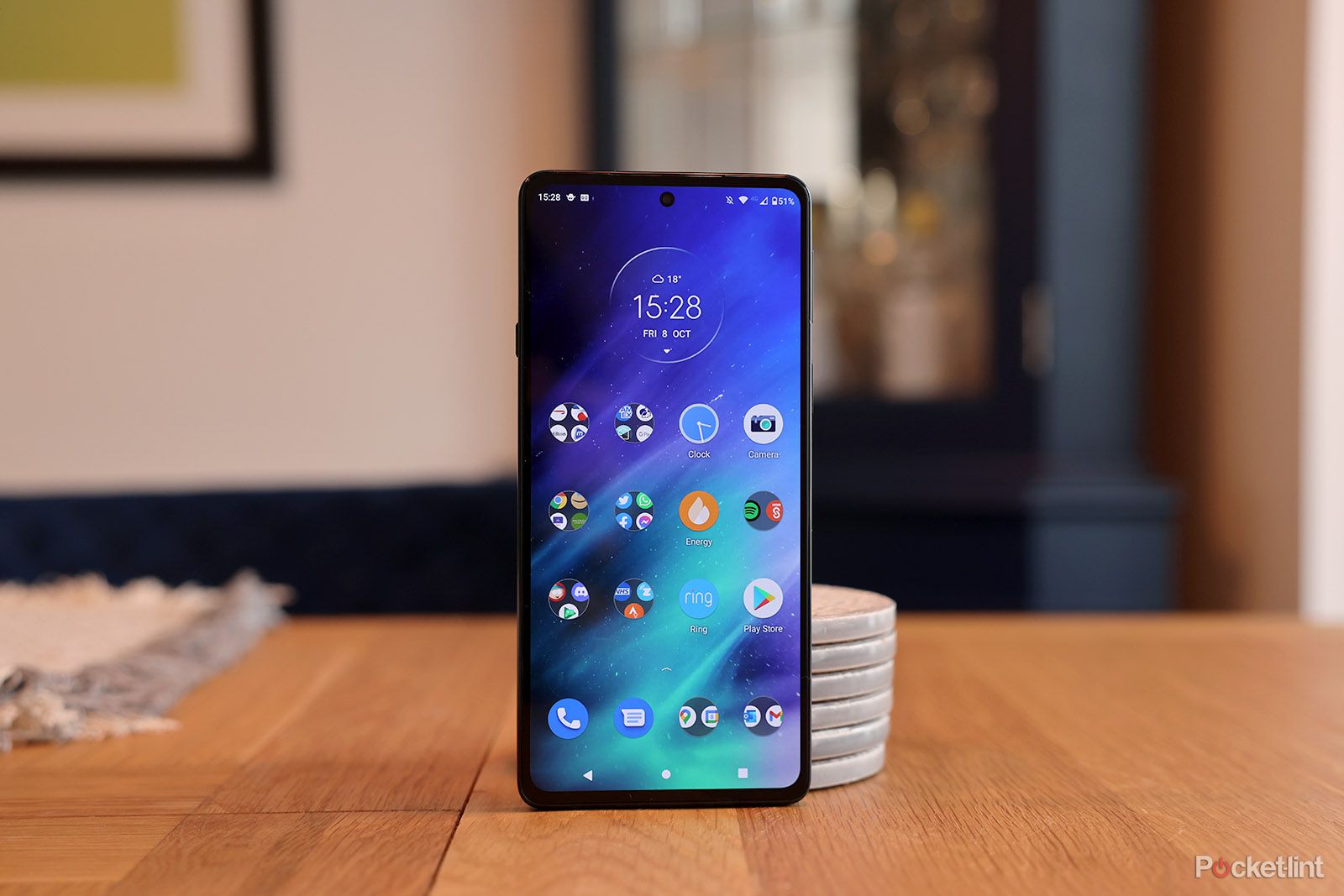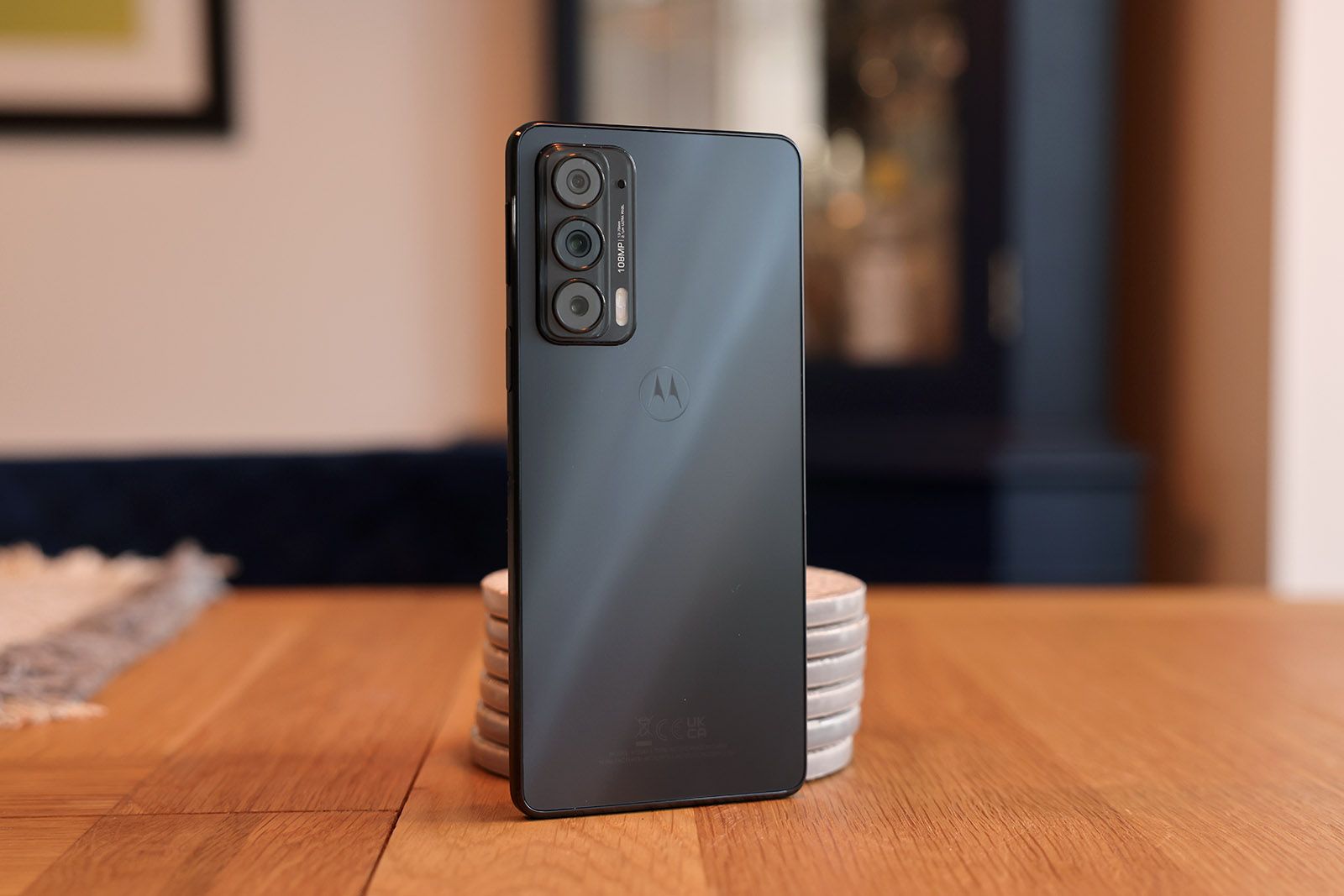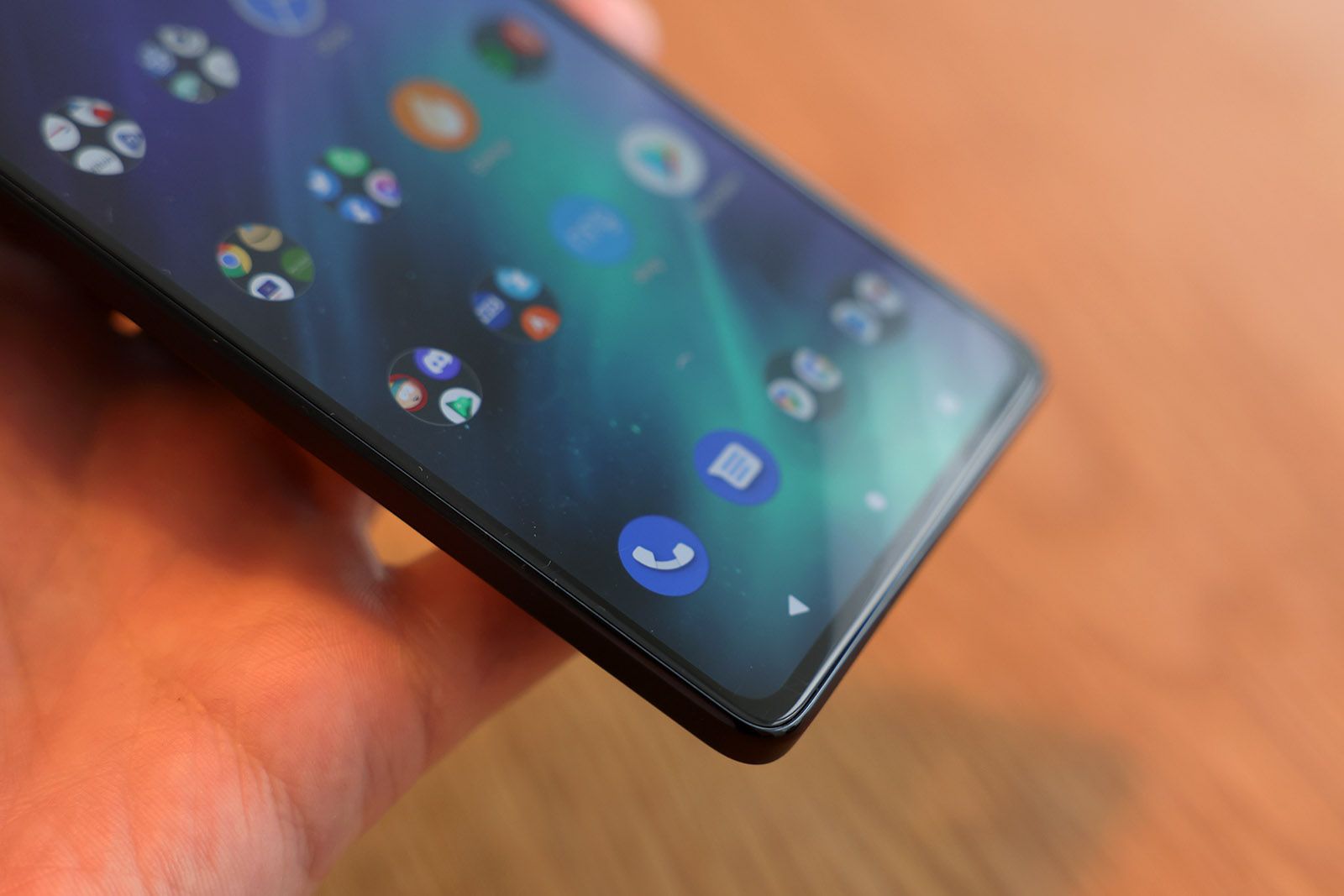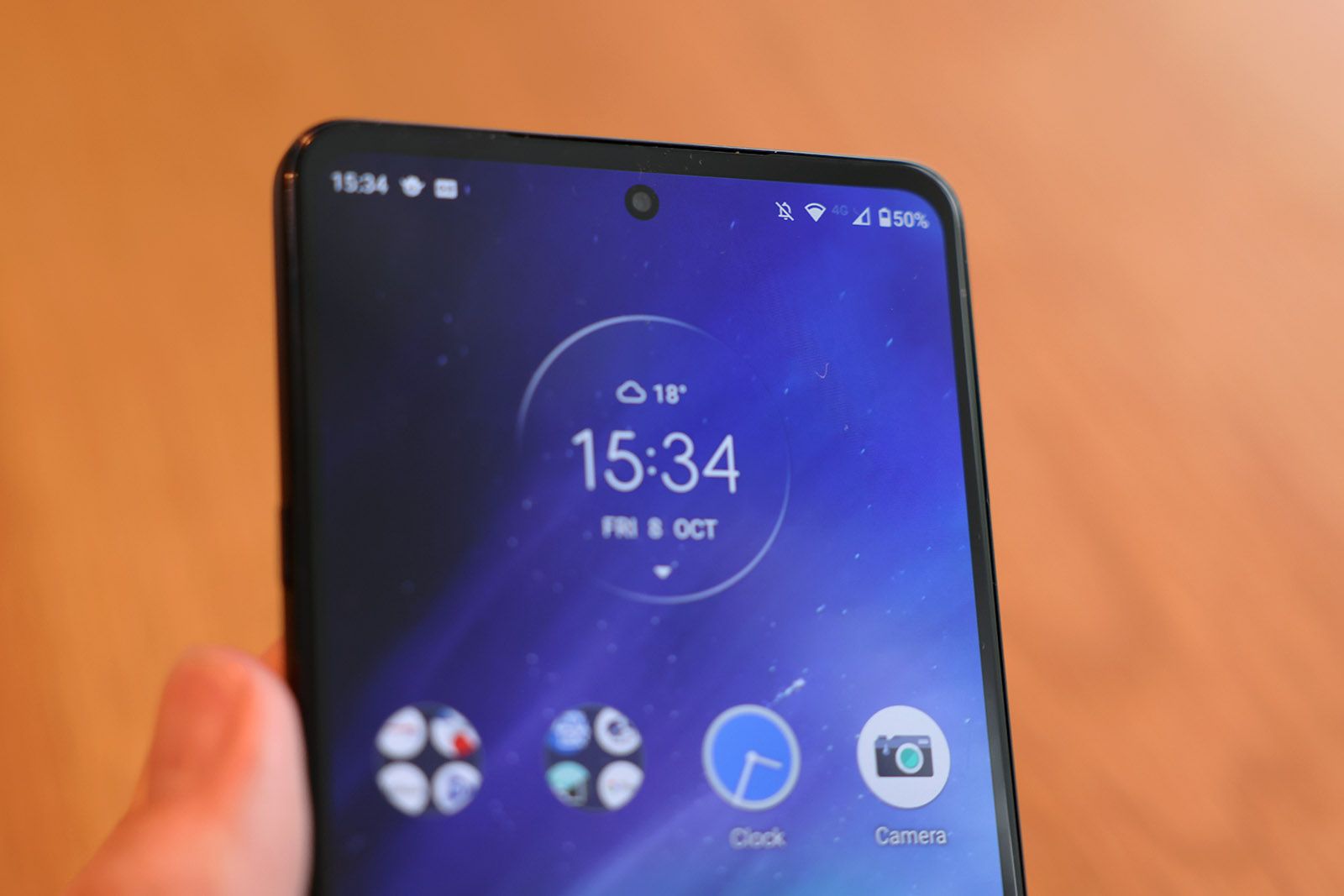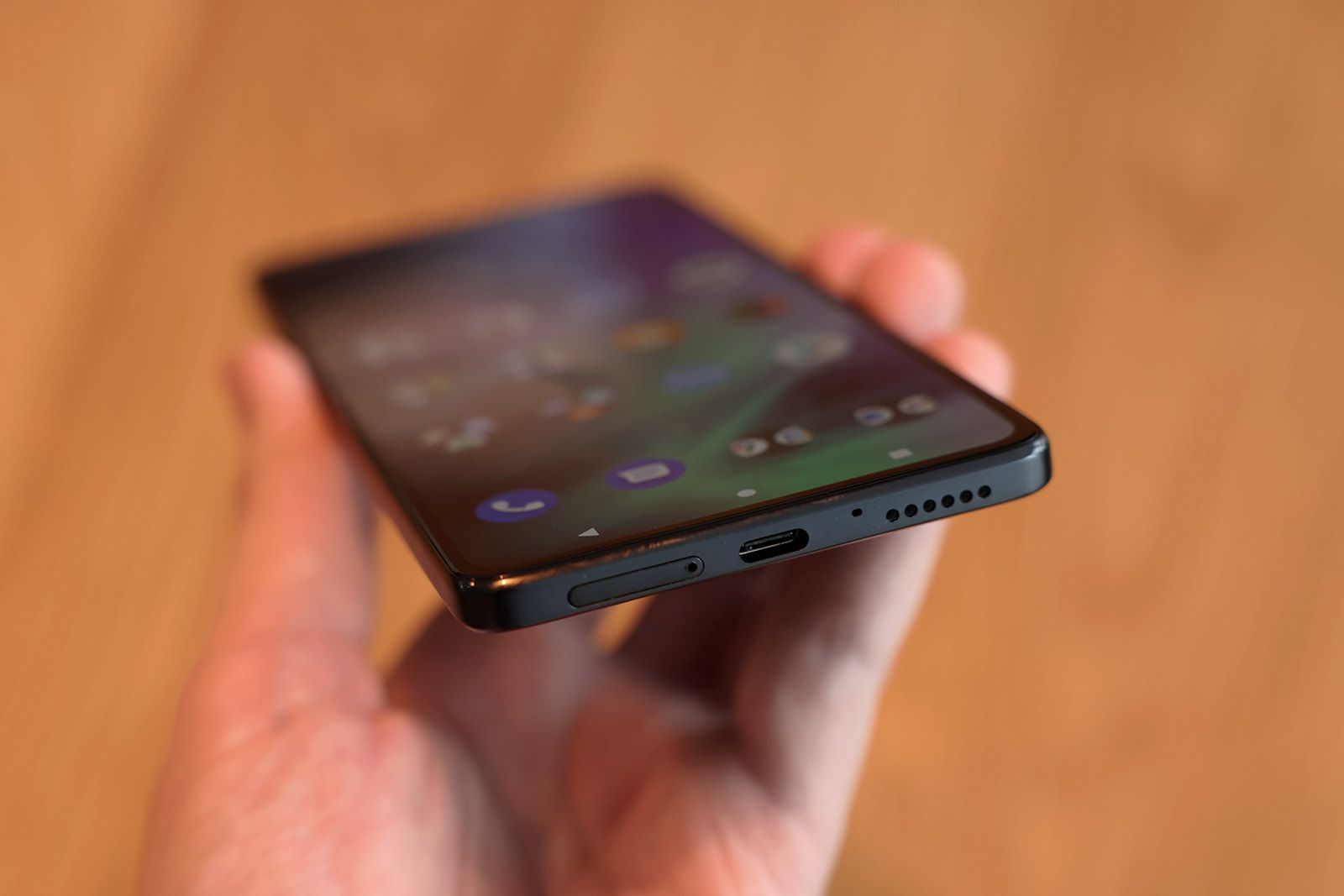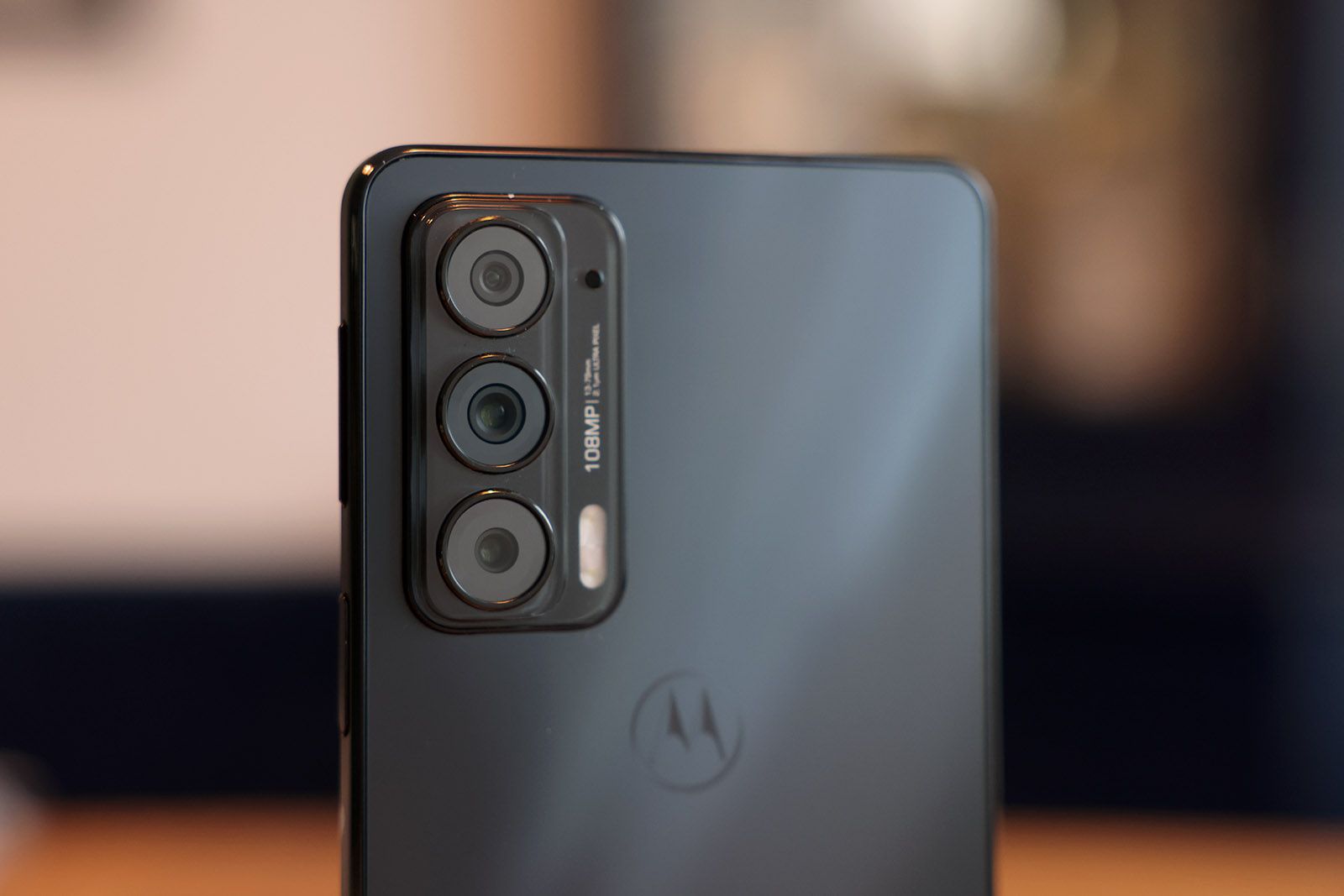When Motorola released its original Edge series in mid-2020, it was all about a striking design with, most prominently of all, a curved edge display. It was that key word - edge - that defined the product.
Flash forward a little over a year and the Moto Edge is back for round two in 2021 - in Edge 20 Lite, standard Edge 20, and maximal Edge 20 Pro forms - but, hang on a minute, where's the curved edge display gone?
That's right: the Moto Edge 20 has a flat screen. So has it therefore lost its edge - figuratively and literally - or does its mixture of sensible price point and specification meld together to deliver a mid-range handset with ample appeal?
Our quick take
The second-generation Edge series feels like a departure from what the original meant for Motorola. But, actually, we can't be forlorn about a lack of a curved edge screen because, well, nobody really needs one of those. Besides, the Edge 20's display - on account of its clarity, colour and refresh rate - is its standout selling point. Talk about flipping the story on its head.
In many ways the Edge 20 is a refreshing mid-range choice: it's not a giant overthick slab that puts battery capacity ahead of aesthetics; it's not got bloated software that causes issues with the basics; it's not crammed with pointless cameras either. So much of the competition explores those gimmicks, but Motorola simply hasn't here.
It would be easy to malign the Edge 20 for turning the series on its head. But, despite the competition being increasingly strong, consider this device for all its strengths in this section of the market and it's a genuine winner. You won't often find an untainted Android experience like this with a screen quite as super at this price point. So, sure, there's OnePlus and Oppo and Xiaomi, but there's still plenty of merit in the Moto Edge 20 - we actually prefer it to the (upon reflection) overpriced original.

Moto Edge 20 - 4.5 / 5
| FOR | AGAINST |
|---|---|
|
|
motorola edge 20
Design & Display
- 6.7-inch OLED display, 1080 x 2400 resolution, 144Hz refresh rate, HDR10+
- Finishes: Frosted Grey (pictured), Frosted White, Frosted Emerald
- Side-mounted fingerprint scanner (in power button)
- Dimensions: 163 x 76 x 7mm / Weight: 163g
Over the last year or so there's been increasing pressure to squeeze more and more battery into devices which, in turn, has resulted in them getting bigger. Not just on the diagonal either - there's a 6.7-inch display here, which is daresay the standard these days - but in terms of thickness.
However, Motorola seems to have bucked that trend as, thankfully, the Edge 20 is nice and trim by design. We have to say, after first moving into the Edge 20, it felt very refreshing to be holding a handset that wasn't overtly chunky or heavy. That it doesn't try and murder our jeans' pocket every time we put the device away makes us happy.
We have only two grumbles: that trio of camera to the rear protrudes a little, which can catch sometimes, and it also causes 'desk wobble' when the device is sat flat on its back; and the volume up/down buttons and fingerprint login are so far up the phone's body that only those with mega-fingers are going to find it natural to make adjustments with a one-handed grip.
Given its middling price point, though, we think the Edge 20's design is largely on point. No, it doesn't necessarily feel like what we'd expect an Edge product to be - after all, there's no curved edge to the screen, right? - but in terms of being well-built, with a solid frame, it delivers an understated yet attractive figure.
Furthermore the Edge 20's screen is genuine quality. Often you can read spec sheets and everything sounds much the same. But when you actually use a device - this has been our day-to-day phone for over a week at the time of writing - it hits home the points of difference that can be experienced.
Whichever way Motorola has managed it - magic? - there's just a certain clarity and pop to this screen that's bounds beyond other recent phones we've tested. The Xiaomi 11T Pro with its OLED panel, ZTE Axon 30 5G with its under-display scanner, even the Samsung Galaxy Z Fold 3 on account of its reflective POLED panel - the Motorola is better than the lot.
We say that just on account of its visual clarity, too, but the Edge 20's panel has another trick up its sleeve: a 144Hz refresh rate. Which is, well, supposedly one better than the increasing 120Hz norm that you'll find in flagship phones. To find such a high refresh rate in a mid-range phone is highly unusual, but, in reality, your eyes aren't going to tell the difference between 120Hz and 144Hz (even in Android's developer mode, with the phone showing its live frame-rate, we've never seen its Auto AI select anything over 120Hz anyway).
The bigger point is why faster refresh rates are important. The old standard was 60Hz, meaning 60 refreshes per second, so by more than doubling that figure you're adding potential smoothness to animations. You'll really see it in simple actions, such as scrolling black text on white backgrounds, which sounds mundane - but the moment you pick up an older 60Hz phone it's like someone's put you in 1940s animation mode by compare. So 144Hz is definitely a nice-to-have feature and well done to Motorola for squeezing it in here.
Performance & Battery
- Qualcomm Snapdragon 778 platform, 6/8GB RAM
- Battery: 4000mAh capacity, 30W Turbo Charge
- Connectivity: Wi-Fi 6, 5G
- Software: Android 11
Of course having a 144Hz panel immediately raises concerns with battery life, because it means so much more work is constantly required. We've already said that the Edge 20 isn't particularly thick in terms of build, as its battery isn't huge - many flagships have cells 25 per cent more capacious, for example - but, through some clever management and the right choice to hardware, longevity isn't a problem.
Don't expect the Edge 20 to get you through more than a day, because it barely can. But we've been making it to bed after 16 hours of use with around 25 per cent charge remaining each day. That's included an hour of Strava using GPS, an hour of Zwift Companion sync, 90 minutes of proper gaming, and the usual social and browsing pressures. It's perfectly good enough to not give you anxiety.
That's down to the balance of power and software we suspect. Under the hood there's Qualcomm's Snapdragon 778 platform, complete with 8GB RAM. There's also a Performance setting to permit 'RAM boost' - which, we believe, involves utilising some of the on-board storage to use as overflow RAM equivalent.
It's a perfectly capable processor that'll enable you to browse at 5G speeds, load up various games, and multi-task without issue. It's not a flagship processor, so it comes with various minor blips from time to time - loading up South Park: Phone Destroyer, for example, brings a slight 'stutter' in lowering of frame-rate at the beginning of each player-versus-player match, but that then rectifies and live gameplay is perfectly smooth.
A big part of the Motorola appeal is also the way it treats its software. The American company relies on Google Android - here in version 11, with future updates promised - but, unlike so many other competitors, largely leaves the bones of it untouched. Bar the Moto app, which opens quick-access to some useful features - gesture controls, always-on display settings, Gametime blocking features during gameplay - the look and feel and fluidity of the operating system is very much like stock Android. It plays nice with Android Auto. It doesn't randomly crash. There aren't notification issues. It just works - and works well.
Cameras
-
Triple rear cameras:
- Main (26mm): 108-megapixel, f/1.9 aperture, 0.7µm pixel size, phase detection autofocus (PDAF)
- Tele (78mm): 8MP, f/2.4, 1.0µm, PDAF, optical image stabilisation (OIS)
- Ultra-wide (13mm): 16MP, f/2.2, 1.0µm
- 32-megapixel front-facing selfie camera
Also not jumping on the cameras overload bandwagon, Motorola deploys three genuinely useful ones on the rear of the Edge 20: a highly resolute main camera (it's 108-megapixels); a far less resolute 16MP ultra-wide; and an even less resolute still 3x optical zoom. No mucking about with unnecessary depth sensors, macro optics or mono lenses that are just unnecessary. Keeping it simpler in that regard is commendable, for sure, although the actual capabilities of the cameras varies fairly dramatically.
The 108MP main uses a nine-in-one processing method to breakdown each nine 'pixel' grid into just one corresponding pixel in a resulting image - this means more data can be captured and processed for better clarity and colour. It rings true in daylight, too, with decent results and nice use of high dynamic range (HDR) to keep exposures balanced in all kinds of conditions. Low light, though? Not so much. The Edge 20 really finds a bit of a wall in this regard, losing colour and much clarity, but still producing passable images in Night Vision mode. Sometimes colour balance is a bit skewed too.
The ultra-wide camera can't deliver the same clarity as the main, and the edges of images are soft, as is typical of such a lens. Just avoid using this in low-light conditions, as while the main sensor can just about get away with it, the ultra-wide's sensor can't handle things so well. But for group shots, or when you need to just fit a bit more in the frame, it's still really useful to have.
For a mid-range device to feature a proper optical zoom camera - this one is 3x - is rather rare, so that's yet another nice-to-have tick in the box for the Edge 20. Don't expect miracles from its low-resolution sensor, but the ability to shoot further away subjects as if they're closer in the frame - the lens is a 78mm equivalent, so quite close to a classic portrait lens - is again really helpful at certain times.
Moving between this trio of lenses is super easy too: hit the corresponding circular nub that's always on display - there's macro (flower symbol), .5x, 1x, 3x - and the camera jumps right to it. Or you can pinch-to-zoom for those in-between focal lengths.
Overall the Moto Edge 20 does well to deliver cameras that are actually useful and easy to use. No, they're not the very best on the market - the Xiaomi 11T Pro has a better setup, for example, delivering better results from a worse overall phone - but will more than get you by and, for a mid-range device, this is fairly rare to find.
motorola edge 20
To recap
It would be easy to malign the Edge 20 for turning the series on its head - as there's no curved edge screen to be found - or maybe for the competition being more inventive. But, actually, you won't often find an untainted Android experience like this with a screen quite as super at this price point.

